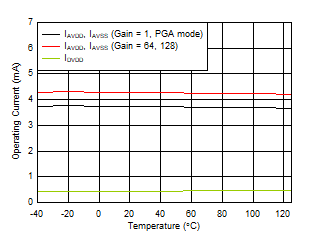SBAS970 October 2019 ADS1235-Q1
PRODUCTION DATA.
- 1 Features
- 2 Applications
- 3 Description
- 4 Revision History
- 5 Pin Configuration and Functions
- 6 Specifications
- 7 Parameter Measurement Information
-
8 Detailed Description
- 8.1 Overview
- 8.2 Functional Block Diagram
- 8.3 Feature Description
- 8.4
Device Functional Modes
- 8.4.1 Conversion Control
- 8.4.2 Chop Mode
- 8.4.3 AC-Bridge Excitation Mode
- 8.4.4 ADC Clock Mode
- 8.4.5 Power-Down Mode
- 8.4.6 Reset
- 8.4.7 Calibration
- 8.5 Programming
- 8.6
Register Map
- 8.6.1 Device Identification (ID) Register (address = 00h) [reset = Cxh]
- 8.6.2 Device Status (STATUS) Register (address = 01h) [reset = 01h]
- 8.6.3 Mode 0 (MODE0) Register (address = 02h) [reset = 24h]
- 8.6.4 Mode 1 (MODE1) Register (address = 03h) [reset = 01h]
- 8.6.5 Mode 2 (MODE2) Register (address = 04h) [reset = 00h]
- 8.6.6 Mode 3 (MODE3) Register (address = 05h) [reset = 00h]
- 8.6.7 Reference Configuration (REF) Register (address = 06h) [reset = 05h]
- 8.6.8 Offset Calibration (OFCALx) Registers (address = 07h, 08h, 09h) [reset = 00h, 00h, 00h]
- 8.6.9 Full-Scale Calibration (FSCALx) Registers (address = 0Ah, 0Bh, 0Ch) [reset = 00h, 00h, 40h]
- 8.6.10 Reserved (RESERVED) Register (address = 0Dh) [reset = FFh]
- 8.6.11 Reserved (RESERVED) Register (address = 0Eh) [reset = 00h]
- 8.6.12 Reserved (RESERVED) Register (address = 0Fh) [reset = 00h]
- 8.6.13 PGA Configuration (PGA) Register (address = 10h) [reset = 00h]
- 8.6.14 Input Multiplexer (INPMUX) Register (address = 11h) [reset = FFh]
- 9 Application and Implementation
- 10Power Supply Recommendations
- 11Layout
- 12Device and Documentation Support
- 13Mechanical, Packaging, and Orderable Information
Package Options
Mechanical Data (Package|Pins)
- RHM|32
Thermal pad, mechanical data (Package|Pins)
- RHM|32
Orderable Information
6.8 Typical Characteristics
at TA = 25°C, AVDD = 5 V, AVSS = 0 V, DVDD = 3.3 V, VREF = 5 V, data rate = 20 SPS, fCLK = 7.3728 MHz and gain = 128 (unless otherwise noted)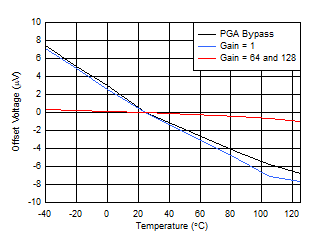
| After calibration, shorted input |
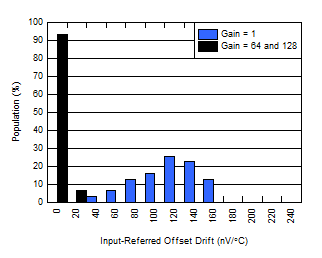
| Shorted input, 30 units |
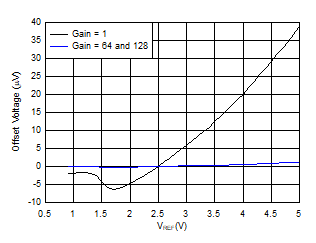
| After calibration |
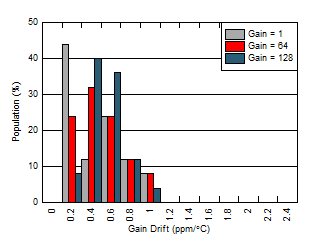
| 30 units |
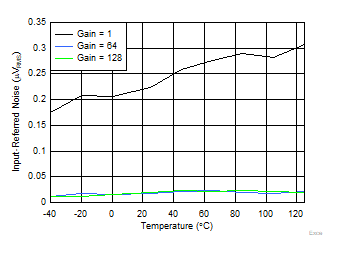
| 20 SPS, Sinc4 mode |
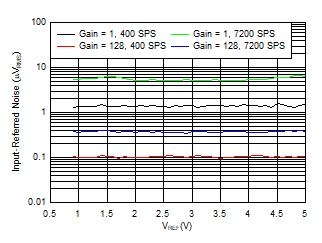
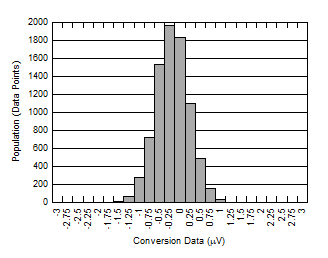
| 7200 SPS, Gain = 128, 8192 data points, shorted inputs |
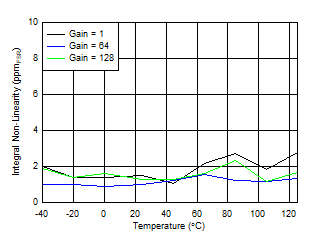
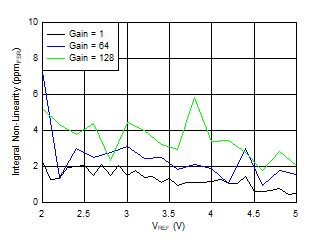
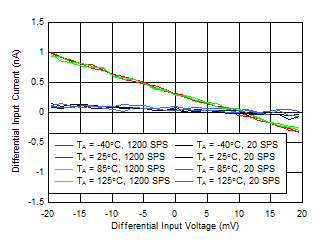
| Chop Mode, Gain = 128 |
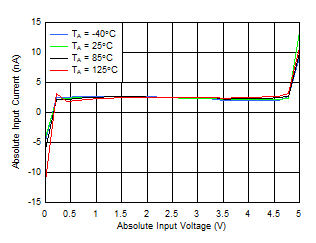
| Gain = 128 |
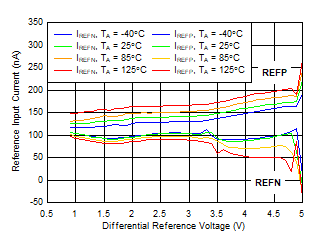
| VREFN = AVSS |
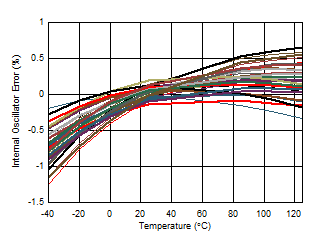
| 30 units |
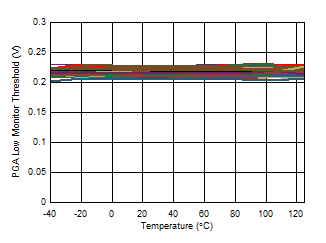
| 30 units |
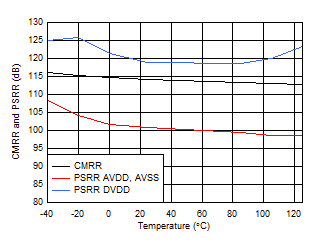
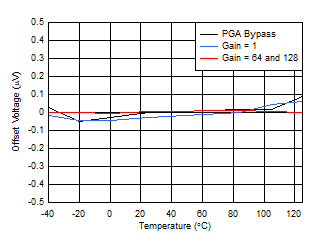
| Chop mode, after calibration, shorted input |
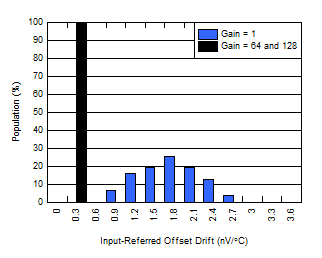
| Chop mode, shorted input, 30 units |
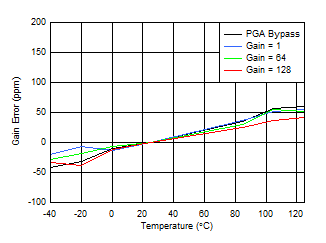
| After calibration |
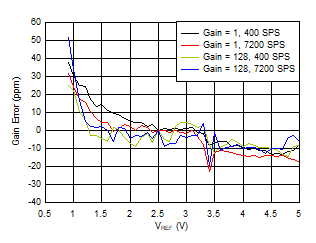
| After calibration |
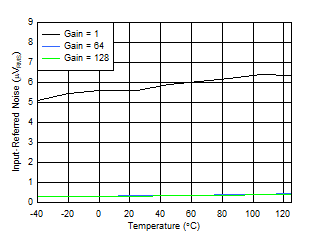
| 7200 SPS, Sinc1 mode |
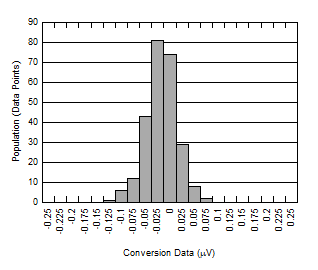
| 20 SPS, Gain = 128, 256 data points, shorted inputs |
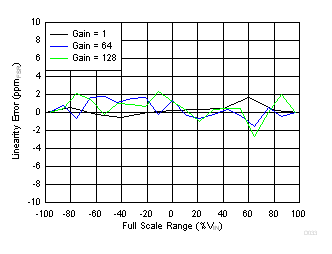
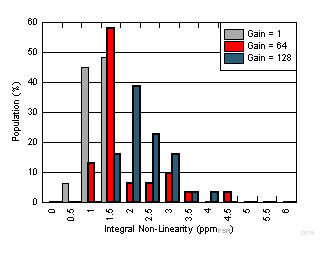
| 30 Units |
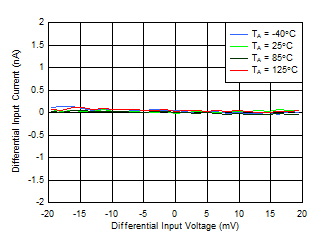
| Gain = 128 |
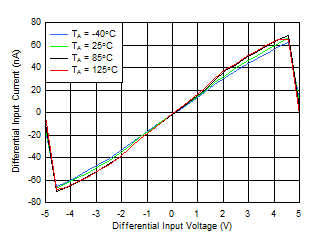
| PGA Bypass (gain = 1) |
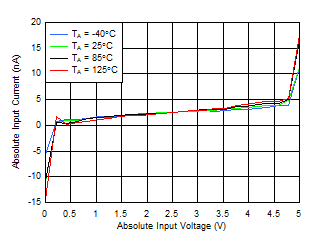
| Chop Mode, Gain = 128 |
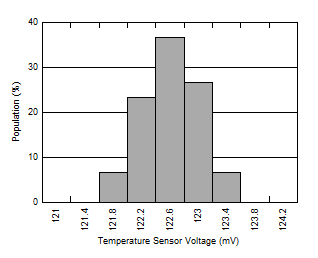
| 30 units |
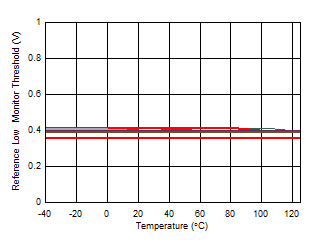
| 30 units |
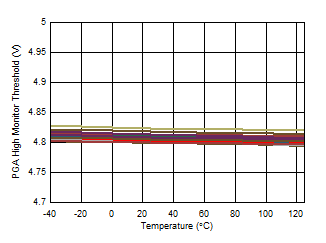
| 30 units |
